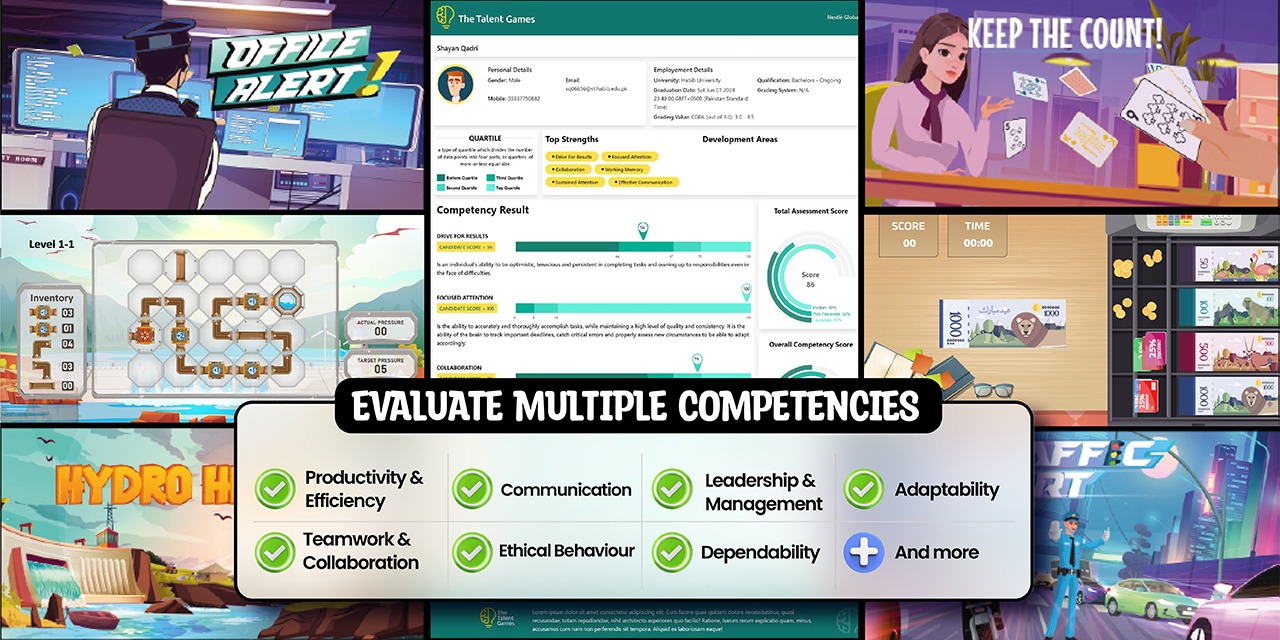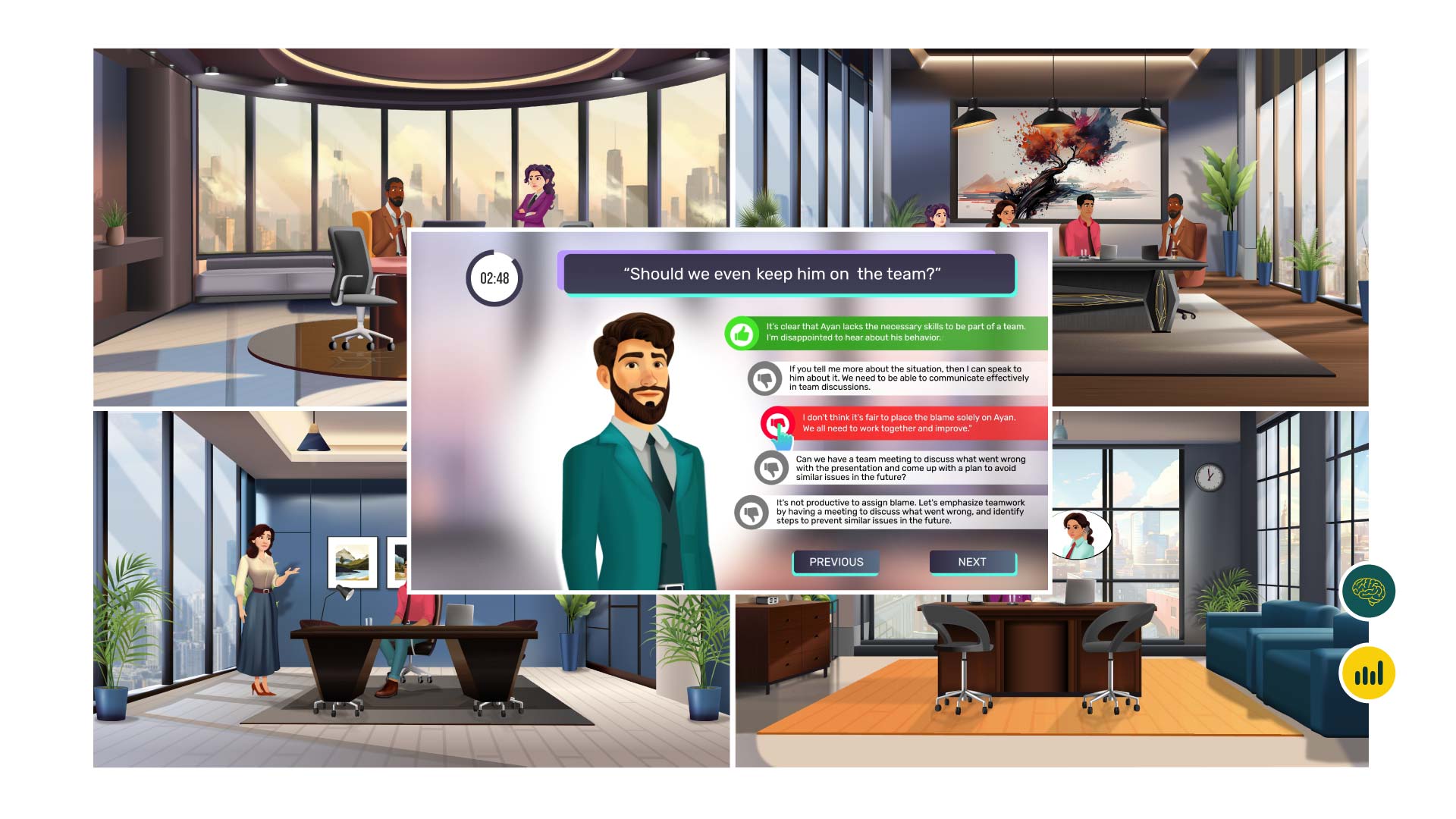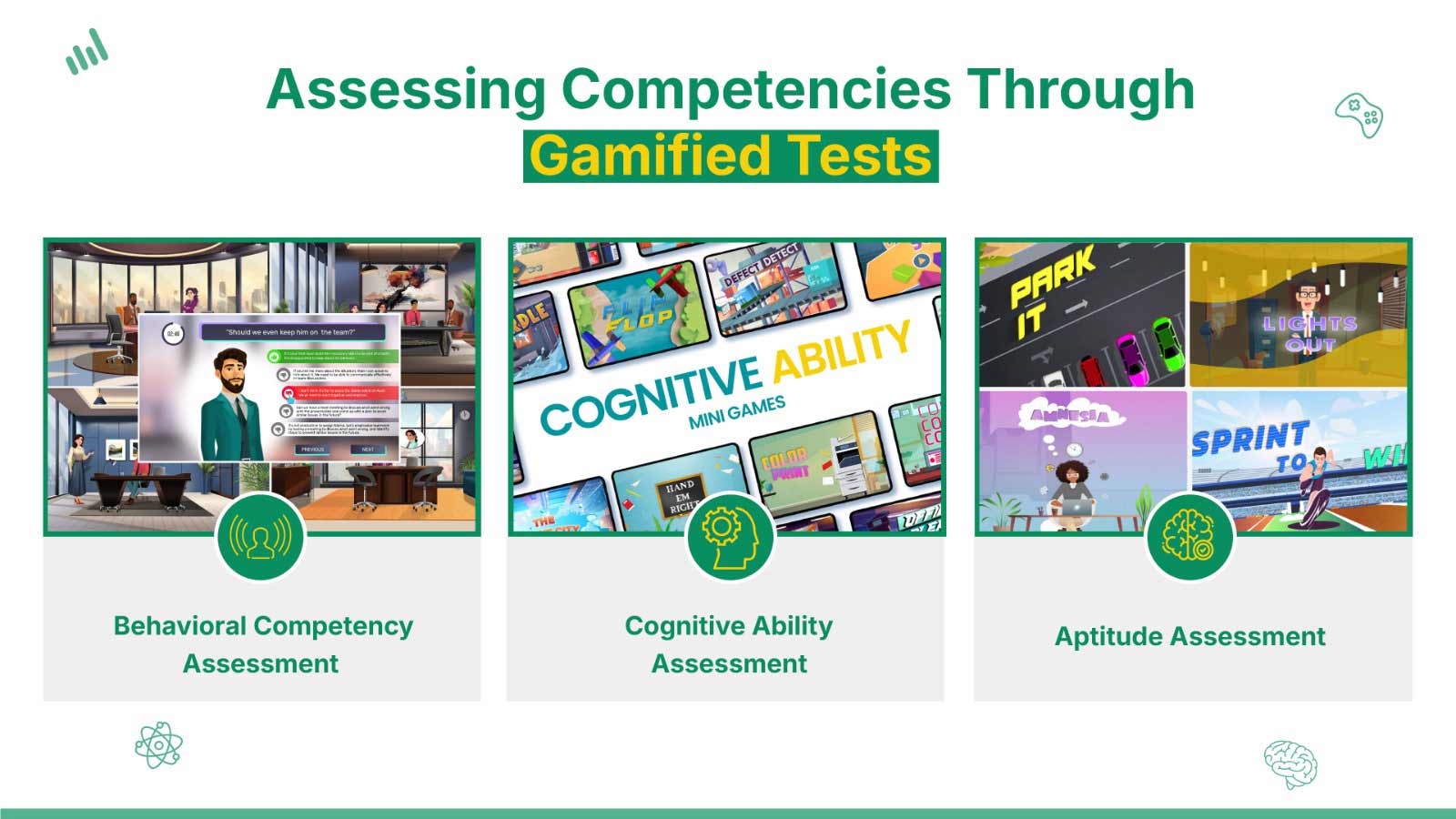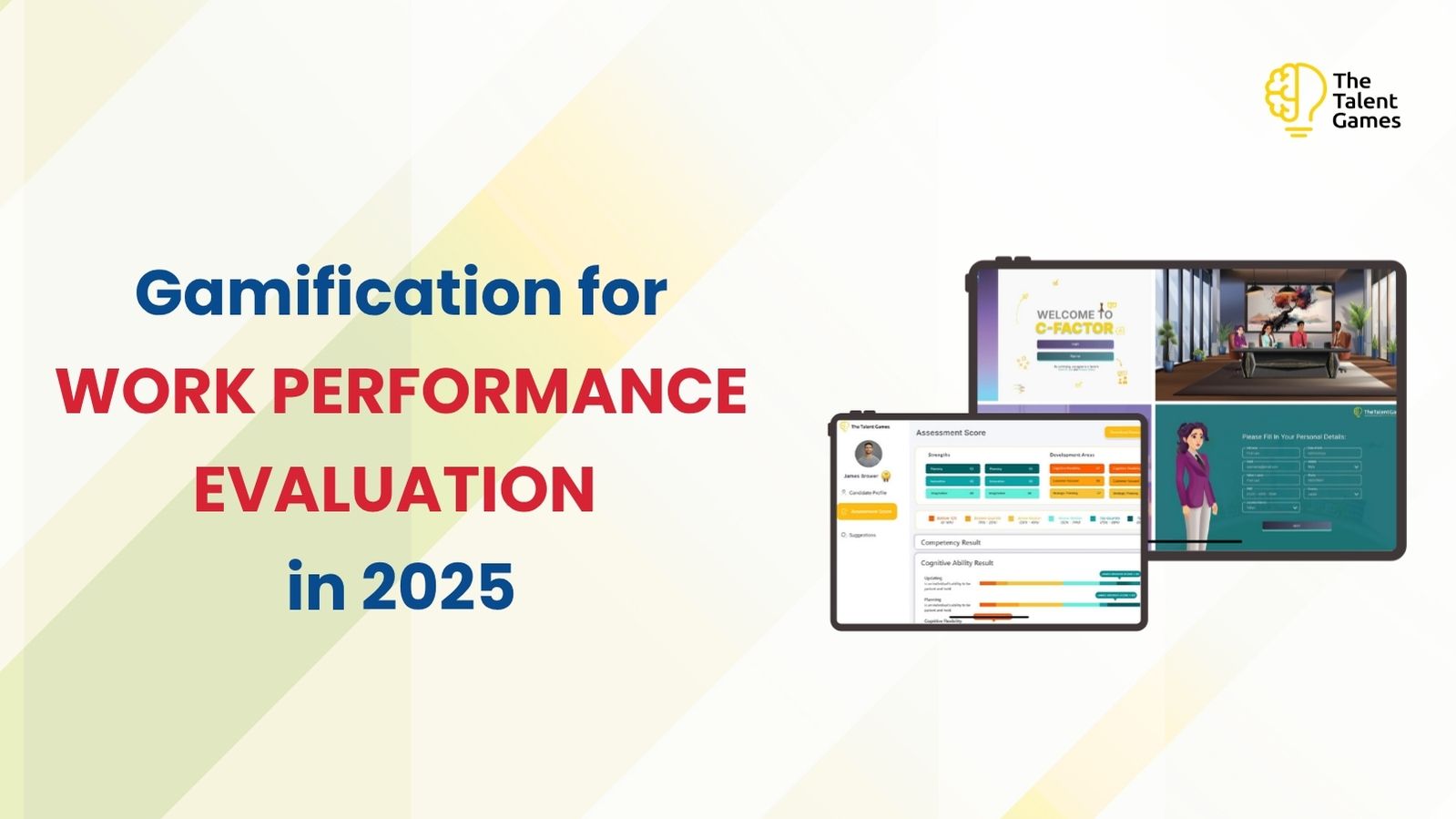As we stride into the ever-evolving landscape of the professional world in 2025, the process of work performance evaluation is undergoing a transformative shift that has become top recruiting trend too.
One innovative approach gaining momentum is the integration of gamification into performance assessments.
In this blog post, we’ll explore seven compelling reasons why gamification is set to revolutionize work performance evaluation this year.
What is Gamified Evaluation Process?
Think of the gamified evaluation process as turning a work review into a fun game. Imagine a customer service team entering a virtual world to solve customer issues.
When they do well, they earn points and badges, like scoring in a game. It’s a complete simulation of the work-based scenarios.
It’s a bit like playing levels in a video game. As employees go through the evaluation, they get quick feedback and rewards for doing a good job.
It’s not just a traditional lifeless performance review; it’s more like an interactive adventure.
Adding competition and rewards makes work feel more like a game, turning evaluations into something exciting and motivating for everyone.

How to use Gamification for Work Performance Evaluation?
Incorporating gamified assessment into work performance evaluation involves a thoughtful integration of game elements and principles into the evaluation process. Here’s a step-by-step guide:
- Identify Objectives and Metrics
Clearly define the goals and objectives of the performance evaluation. Identify key performance metrics that align with organizational objectives.
- Consider the Work Context of Employees
Consider the preferences, interests, and work context of your employees. Tailor game elements to resonate with the demographic and work culture.
- Choose Appropriate Game Mechanics
Select game mechanics that align with the evaluation goals (e.g., points, badges, leaderboards). Ensure that the chosen mechanics motivate desired behaviors and outcomes.
- Design Engaging Scenarios
Develop scenarios or simulations that mimic real-world work challenges. Create a narrative that immerses employees in the assessment process.

- Provide Clear Instructions
Clearly communicate the rules and objectives of the gamified assessment. Ensure that employees understand how their performance will be measured.
- Set Achievable Goals
Break down performance goals into achievable milestones. Reward employees for reaching these milestones to maintain motivation.
- Create a Reward System
Establish a reward system tied to performance achievements. Consider a mix of tangible and virtual rewards, such as badges, recognition, or small incentives.
- Implement a Progression System
Design a progression system where employees can advance to higher levels. Each level could represent increased expertise or responsibility.
- Ensure Accessibility and Inclusivity
Make the gamified assessment accessible to all employees. Consider different learning styles and ensure inclusivity in the design.
- Pilot and Gather Feedback
Conduct a pilot program to test the gamified assessment. Collect feedback from participants and make necessary adjustments.
- Evaluate and Iterate
Continuously assess the effectiveness of the gamified assessment. Iterate on the design based on ongoing feedback and performance data.
7 Reasons to Use Gamification for Employee Performance Evaluation
Here are 7 key reasons how gamified assessment can help you evaluate the performance of your employees with highly engaging and objective assessment:
1. Enhanced Engagement and Motivation
Work performance evaluations can often feel like a dull task, lacking the enthusiasm needed to drive meaningful results.
Gamification injects an element of fun and competition into the process, motivating employees to actively participate.
By turning evaluations into a game-like experience with challenges, badges, and rewards, engagement levels soar, creating a more dynamic and motivating assessment environment.
2. Clear and Measurable Objectives
One significant advantage of gamification in work performance evaluation is the ability to set clear and measurable objectives.
Traditional evaluations may leave employees uncertain about what is expected. In a gamified system, objectives become like levels in a game, offering employees a clear roadmap to success.
This clarity not only enhances understanding but also facilitates a more transparent evaluation process.
3. Continuous Improvement Through Instant Feedback
Traditional performance evaluations often suffer from delayed feedback, hindering employees’ ability to make immediate improvements.
With gamification, instant feedback becomes a cornerstone. Employees receive real-time assessments of their performance, allowing them to identify strengths and areas for improvement promptly.
This constant feedback loop accelerates professional development, creating a culture of continuous improvement.
4. Developing a Collaborative Culture
Gamification has the power to transform the workplace into a collaborative arena. Through team challenges and peer recognition features, employees are not only accountable for their individual performance but are also encouraged to collaborate and support their colleagues.
This collaborative spirit contributes to a positive work culture, enhancing teamwork and strengthening bonds.
5. Personalized Learning Paths
One-size-fits-all evaluations often fail to address the unique strengths and weaknesses of individual employees.
Gamification allows for the creation of personalized learning paths. Employees can focus on specific skill sets or areas for development, making the evaluation process more tailored and relevant to their professional growth.
6. Increased Job Satisfaction and Retention
Job satisfaction is closely tied to the sense of accomplishment and recognition employees feel in their roles. Gamification brings an element of play and celebration to work performance evaluation, making employees feel valued.
When individuals see their efforts translated into points, badges, or leaderboard recognition, job satisfaction rises, contributing to higher retention rates within the organization.

7. Data-Driven Decision-Making
In the age of analytics, data-driven decision-making is paramount. Gamification in work performance evaluation provides organizations with rich, real-time data on employee performance.
Gamification has emerged as a highly interactive and engaging strategy in the modern recruitment landscape. By enhancing engagement, providing clear objectives, strengthening collaboration, and offering personalized learning paths, it addresses the shortcomings of traditional evaluation methods.
As organizations seek innovative ways to evaluate and nurture their workforce, gamification stands out as a transformative force, displaying the full potential of employees in the digital age. Simplify the future of work performance evaluation with gamification and enter a new era of professional development.
